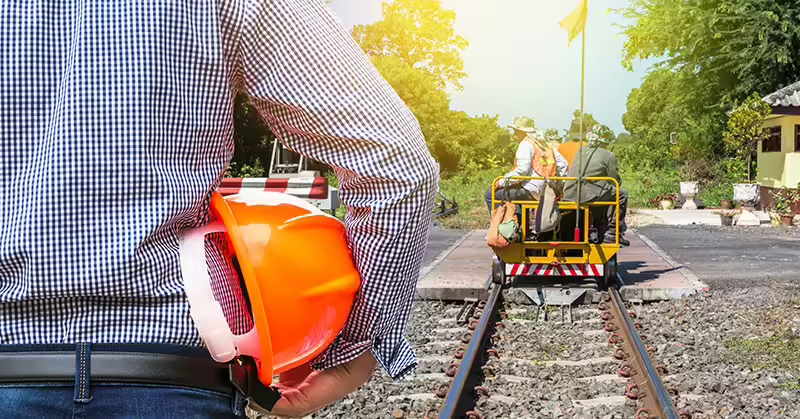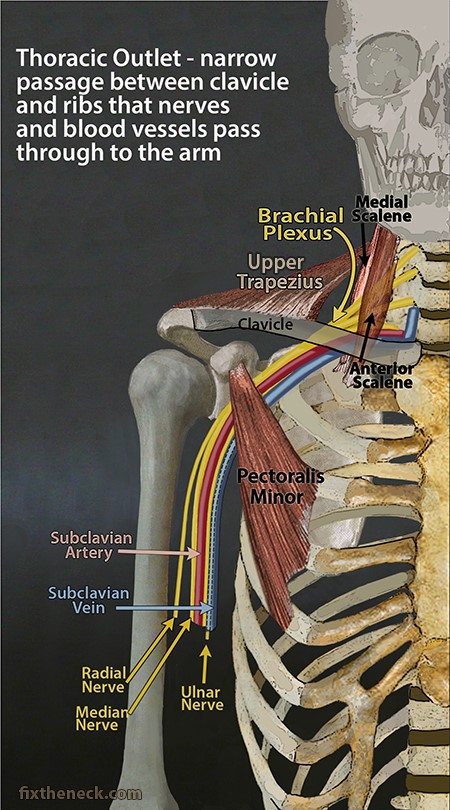Morrow & Sheppard Wins $1.1MM Settlement For Injured Railroad Worker
October 18, 2018

Our client was injured while working on the railroad as a “carman” or “mechanical inspector.” At the time, he was riding on an all-terrain vehicle alongside a parked train, inspecting train car connections called “couplings.” As our client was inspecting a coupling, the ATV lurched forward unintentionally, causing our client to fall forward, striking a train car and then the ground. Our client claimed the fall caused injuries to his arm and shoulder.
We filed a lawsuit under the Federal Employers Liability Act or “FELA.” We alleged that the ATV lurched forward because it was not properly maintained and was defective.
Railroad Denies Responsibility
The railroad denied responsibility. Initially, the railroad claimed that the incident never occurred and was made up. Then, the railroad claimed there was nothing wrong with the ATV, and that even if it lurched forward, it did so because our client left the vehicle in gear, and did not set the parking brake.
Later, the railroad claimed our client was not injured. Then, the railroad claimed our client’s injuries were pre-existing. And it was true, by the way, that our client had sustained significant past injuries, including an injury to the same shoulder that was re-injured in the incident. Under the FELA, however, the railroad is responsible for re-aggravation of a pre-existing injury.
Railroad Rejects Reasonable Settlement Offers
Our client was initially willing to settle for approximately 1/3 of what the case ultimately settled for. The railroad rejected our offers and threatened to take the case to trial. Morrow & Sheppard accepted the challenge. We promised the railroad that the case would get worse, not better, if the railroad chose to continue fighting.
Morrow & Sheppard Proves Our Client’s Case
When the railroad rejected our settlement offers, we set out to prove our client’s FELA claim.
Our FELA attorneys took depositions (sworn testimony) from 14 witnesses, including doctors, railroad workers, and expert engineers. We filed thousands of pages of briefing and documents, and argued multiple times in front of the judge, who each time ruled in our client’s favor. We sifted through thousands of pages of documents the railroad was forced to produce, searching for needles in a haystack of irrelevant documents meant to distract us.
We ultimately proved our client’s FELA work injury claim. We secured devastating admissions from the railroad’s own hired gun experts, including an engineer and doctor. We created compelling demonstrative exhibits and computer graphics to use at trial. We were ready to go.
Then, on Saturday night, less than 30 hours before trial, the railroad finally admitted responsibility. The railroad agreed to pay $1,039,488.20 to settle our client’s FELA lawsuit. Our attorneys’ fees and expenses were $459,041.42.
This million-dollar FELA settlement was more than our client thought possible, and much more than we would have settled for early on in the case.
Thoracic Outlet Syndrome
Following the incident, our client had elbow surgery to relieve pressure on the ulnar nerve in his dominant arm. Our client previously had surgery on the same-side shoulder for an unrelated work injury, an injury for which he had filed a separate FELA personal injury claim against the railroad. Our client had also been injured in a car accident. The railroad used this information to claim our client was malingering and attempting to secure dual recovery for his earlier injuries.
The doctor who performed elbow surgery believed our client would be cleared to return to work as a railroad carman in due course. The doctor’s records notated, however, that there were indications our client was suffering from some type of pain syndrome. At deposition, the doctor acknowledged that, in some cases, a pain syndrome can be completely debilitating, and may prevent a person from returning to work.
Following that discovery, our client visited expert pain doctors. Those doctors determined that our client was suffering from thoracic outlet syndrome. Thoracic outlet syndrome is a pain syndrome that sometimes results when blood vessels or nerves in the shoulder are compressed.
There are two types of thoracic outlet syndrome: neurogenic thoracic outlet syndrome and vascular thoracic outlet syndrome.
Our FELA client suffered from neurogenic thoracic outlet syndrome, which is the more common form. Neurogenic thoracic outlet syndrome occurs when nerves in the brachial plexus are compressed. As depicted here, the brachial plexus includes the subclavian artery, subclavian vein, radial nerve, median nerve, and ulnar nerve. (Vascular thoracic outlet syndrome involves impingement of the veins in the brachial plexus.).

Credit: fixtheneck.com.
Neurogenic thoracic outlet syndrome can be caused by trauma or injury, such as the railroad fall our client sustained. Signs and symptoms of neurogenic thoracic outlet syndrome may include some or all of the following:
- Muscle wasting in the fleshy base of your thumb (Gilliatt-Sumner hand)
- Pain or aches in your neck, shoulder or hand
- Weakening grip
- Neck, shoulder, and arm pain
- Numbness in the arm, hand or fingers
- Impaired circulation to the extremities (causing discoloration)
- Weakness in the shoulders, arms, and hands
In this case, our client also suffered from a winged scapula. A winged scapula is when the shoulder blade protrudes from the person’s back in an abnormal position. A winged scapula can be an indication of thoracic outlet syndrome. A winged scapula looks like this:

Because of scheduling issues, we conducted an emergency deposition of the railroad’s expert doctor two days before trial. This doctor, who had previously examined our client at the railroad’s request, had opined in writing that our client did not suffer from thoracic outlet syndrome, and should return to work. This expert doctor reiterated those opinions at a deposition when questioned by the railroad’s lawyer.
When the railroad’s lawyer was done asking questions, we cross-examined the expert doctor. We confronted him with study after study, as well as physical evidence, that proved our client had thoracic outlet syndrome. Finally, faced with overwhelming evidence, the railroad’s doctor admitted our client might very well have thoracic outlet syndrome. He further admitted that thoracic outlet syndrome explained our client’s condition, and was probably the reason why he had been unable to return to work. When confronted with his reports from an earlier case, the doctor was also forced to concede that pain syndromes can cost millions of dollars to treat.
The case settled hours later.
What Is An FELA Case?
There are many legal nuances to cases brought under the Federal Employers Liability Act or “FELA.”
As the United States Supreme Court has explained, “[t]he railroad business was exceptionally hazardous at the dawn of the twentieth century . . . the physical dangers of railroading … resulted in the death or maiming of thousands of workers every year, including 281,645 casualties in the year 1908 alone. Enacted that same year in an effort to ‘shif[t] part of the human overhead of doing business from employees to their employers,’ FELA prescribes:
‘Every common carrier by railroad … shall be liable in damages to any person suffering injury while he is employed by such carrier … for such injury or death resulting in whole or in part from the negligence of any of the officers, agents, or employees of such carrier … .’”
FELA claims, like most work personal injury claims, typically involve proof of (1) negligence, (2) causation, and (3) damages. Negligence means, did the railroad do something wrong or unreasonable under the circumstances? Causation is, did the wrongdoing cause the injury? Damages are, how hurt is the worker, and how much is that harm worth?
Because of the FELA’s “humanitarian” and “remedial goal,” one unique aspect of FELA claims is a relaxed standard for causation. As the United States Supreme Court recognized in 2011, “[j]uries in such cases are properly instructed that a defendant railroad “caused or contributed to” a railroad worker’s injury ‘if [the railroad’s] negligence played a part—no matter how small—in bringing about the injury.” CSX Transp., Inc. v. McBride, 564 U.S. 685, 705 (2011). This causation standard “is as broad as could be framed.” Urie v. Thompson, 337 U.S. 163, 181, 69 S.Ct. 1018, 93 L.Ed. 1282 (1949).
As the United States Supreme Court has explained, understanding this argument requires some background. The term “proximate cause” is shorthand for a concept: injuries have countless causes, and not all should give rise to legal liability. In other words, because of “convenience, of public policy, of a rough sense of justice, the law arbitrarily declines to trace a series of events beyond a certain point.” Palsgraf v. Long Island R. Co., 162 N.E. 99, 103 (1928).
In FELA cases, that “certain point” can be much more attenuated and distant than in other types of cases. In other words, there need only be a slight connection between the railroad’s negligence and the injury. In an FELA case, “if negligence is proved and is shown to have ‘played any part, even the slightest, in producing the injury,’” then “the carrier is answerable in damages even if ‘the extent of the [injury] or the manner in which it occurred’ was not ‘[p]robable’ or ‘foreseeable.’ CSX Transp., Inc. v. McBride, 564 U.S. 685, 705 (2011), quoting Gallick v. Baltimore & Ohio R. Co., 372 U.S. 108, 117 (1963).
Consult With Our Texas FELA Lawyers
While many elements favor injured railroad workers, there are also many nuances and potential traps involved with bringing FELA cases. These traps include how to deal with railroad retirement benefits. Further, in some cases, the railroad’s fault may be reduced by the percentage of responsibility a jury or judge assigns to other parties, including the plaintiff himself.
Additionally, liability under the FELA is limited in certain key respects. Railroads are liable only to their employees, and only for injuries sustained in the course of employment. And unlike other types of cases, there is no joint and several liabilities, even if the railroad is found more than 50 percent responsible.
If you or a loved one has been injured working on the railroad, please contact our experienced railroad accident lawyers today. We handle cases all over the country. As we do several times each day, we will provide you with a free, confidential consultation to help you evaluate your options under the FELA or other laws.
Nick Morrow is a trial and personal injury lawyer who has been repeatedly designated as a Super Lawyer. Nick has recovered millions of dollars for deserving clients nationwide. He has handled a variety of business and all types of personal injury cases involving work-related negligence, including but not limited to oilfield injuries, maritime injuries, work injuries, and wrongful death. You can learn more about Nick here.
- Home
- |
- FELA Railroad Injuries
- |
- Morrow & Sheppard Wins $1.1MM...
















































